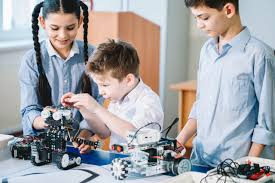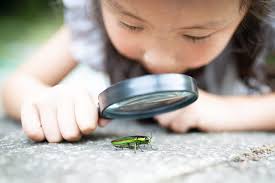In most households, pets are much more than just furry companions. They become part of the family, offering unconditional love, comfort, and joy. However, the benefits of having a pet extend far beyond companionship. Pets play a significant role in the holistic development of children, influencing their emotional, cognitive, social, and physical growth in ways that are often underestimated.
Whether it’s a dog, a cat, a rabbit, or even a hamster, the bond children form with their pets can have lasting, positive effects on their development. Let’s explore how the presence of pets in a child’s life helps shape them into well-rounded, compassionate, and responsible individuals.
Emotional Development: Fostering Compassion and Empathy
One of the most profound impacts a pet can have on a child is in the realm of emotional development. Pets offer children the opportunity to practice empathy and compassion, as they learn to care for another living being. This relationship encourages children to tune into their pet’s needs, be it feeding, grooming, or providing comfort when they are ill.
The act of nurturing a pet helps children develop a sense of responsibility and emotional intelligence. They learn to recognize and understand emotions—not only in their pets but also in themselves. Through these interactions, children gain a greater understanding of empathy, as they witness their pets experiencing joy, fear, and even sadness.
Social Development: Building Social Skills and Strengthening Bonds
Pets also play a crucial role in developing a child’s social skills. For younger children, pets serve as social partners, helping them learn to interact in positive ways. This is especially true for children who may find it difficult to socialize with other kids. A pet can act as a non-judgmental companion that boosts confidence and helps children feel less isolated.
Furthermore, pets provide a natural avenue for children to bond with family members. Whether it’s walking the dog together or playing with a cat, shared pet responsibilities foster teamwork, communication, and a sense of community within the family. The emotional connection formed through caring for a pet can strengthen familial bonds, making pets not just companions, but social catalysts.
Cognitive Development: Enhancing Learning and Problem-Solving Skills
While the emotional and social benefits of pets are well-known, their influence on cognitive development should not be underestimated. Caring for a pet requires a certain level of critical thinking and problem-solving. From figuring out how to train a pet to managing their feeding schedule, children learn to make decisions and solve problems.
Additionally, interacting with pets can improve cognitive functioning by stimulating the brain in positive ways. Activities such as teaching a dog new tricks or observing a pet’s behavior provide opportunities for learning, both in terms of problem-solving and memory recall. For example, children can improve their ability to focus and concentrate as they observe and interpret their pet’s actions.
Physical Development: Promoting Exercise and Active Lifestyles
Physical development is another area where pets have a significant impact, particularly for children with active pets like dogs. Regular walks, playtime, and outdoor activities involving pets help children develop motor skills, coordination, and physical endurance. Engaging in physical play with pets can promote healthy habits and an active lifestyle, helping children stay fit and healthy.
Moreover, the responsibility of caring for a pet teaches children about the importance of maintaining a routine. Pet care—whether it’s taking the dog for a walk or cleaning out a fish tank—often involves physical tasks that help children stay engaged and active. This can have positive effects on their overall health, promoting habits that lead to lifelong fitness.
Mental Health Benefits: Reducing Stress and Anxiety
Children today face various stressors, from school pressures to social challenges. Pets can serve as emotional anchors, helping to reduce stress and anxiety. The unconditional love of a pet can create a sense of security, making children feel more at ease and less anxious. Simply petting a dog or cuddling with a cat can have a calming effect, lowering stress levels and promoting emotional well-being.
Pets provide a sense of routine and stability that is comforting for children. They give children someone (or something) to turn to when they feel overwhelmed, offering nonverbal support that can help them cope with emotional challenges.
Fostering Responsibility: Teaching Accountability and Routine
Taking care of a pet requires daily attention and commitment. Feeding, cleaning, and providing attention all require responsibility, helping children understand the importance of being accountable for the needs of others. This helps them develop a sense of duty and a strong work ethic that can extend to other areas of their lives, such as school or extracurricular activities.
Having a pet also teaches children about routine. The consistency of feeding times, grooming schedules, and playtime helps children understand the value of structure and routine in their own lives, teaching them discipline and time management skills.
Conclusion: The Priceless Role of Pets in Child Development
Pets provide more than just companionship—they are key players in the emotional, social, cognitive, and physical development of children. The lessons children learn from caring for a pet shape them into compassionate, responsible, and emotionally intelligent individuals. The bond formed between children and their pets is one that enhances their overall growth and well-being, leaving a lasting imprint on their lives.
To learn more about the profound impact pets have on children’s growth and development, read the full article from BeAKid:
👉 Paws, Purrs, and Child Development: The Significant Role of Pets in Shaping a Child’s Growth



